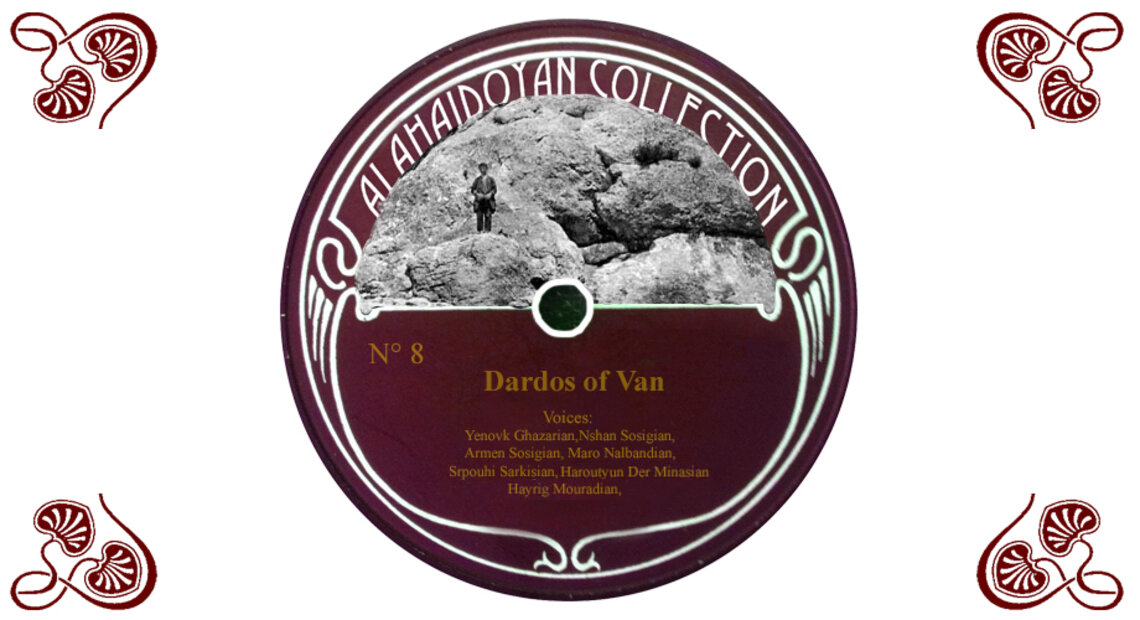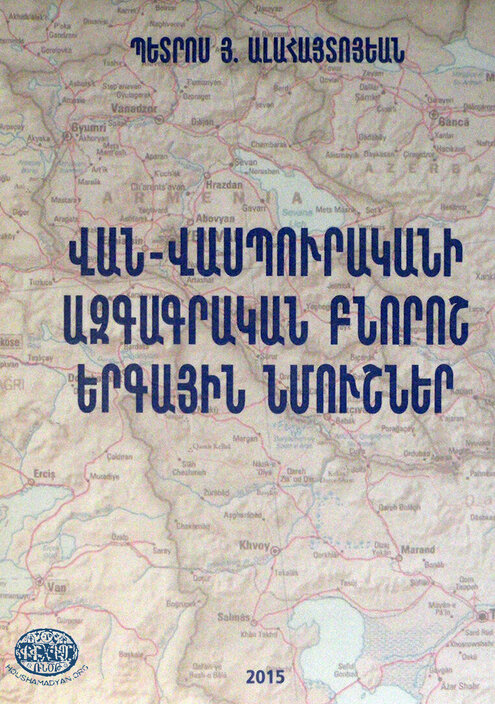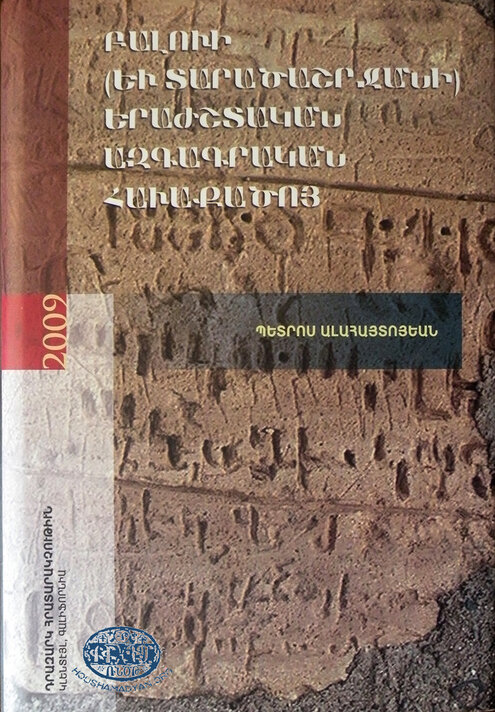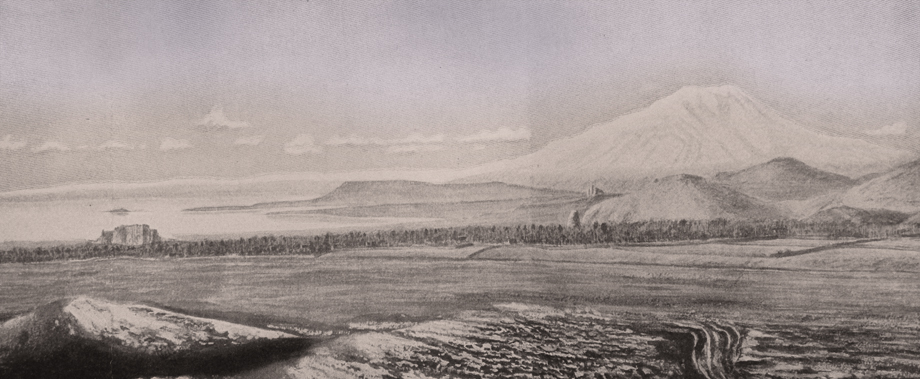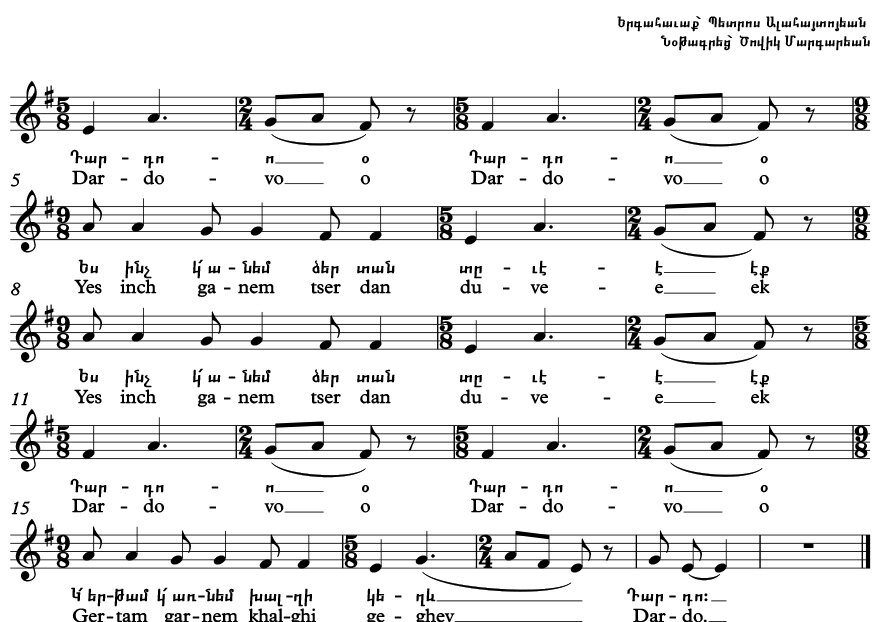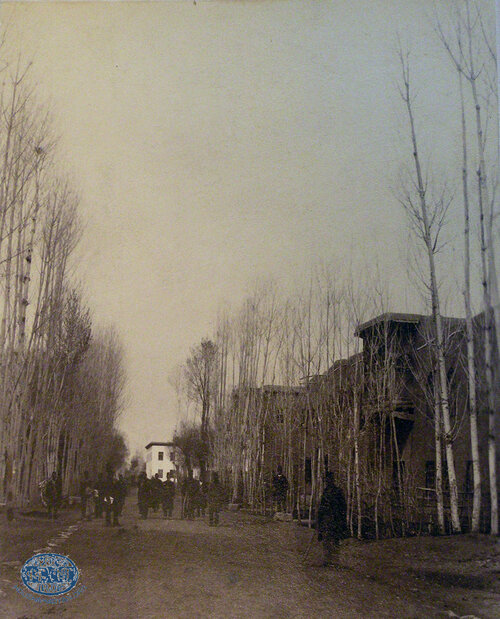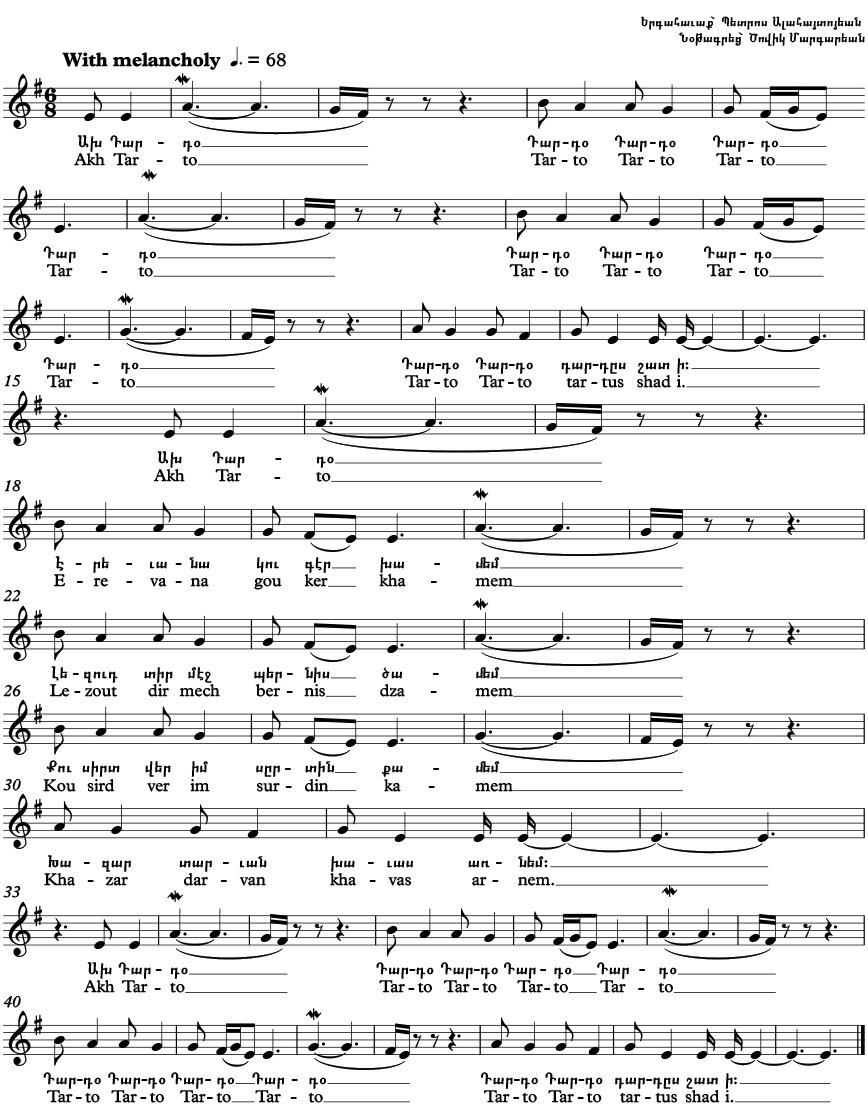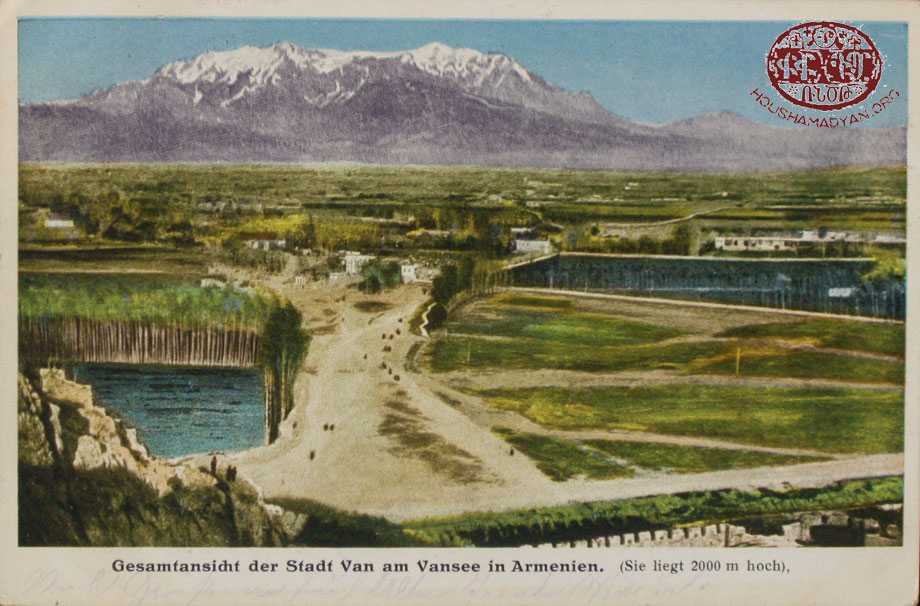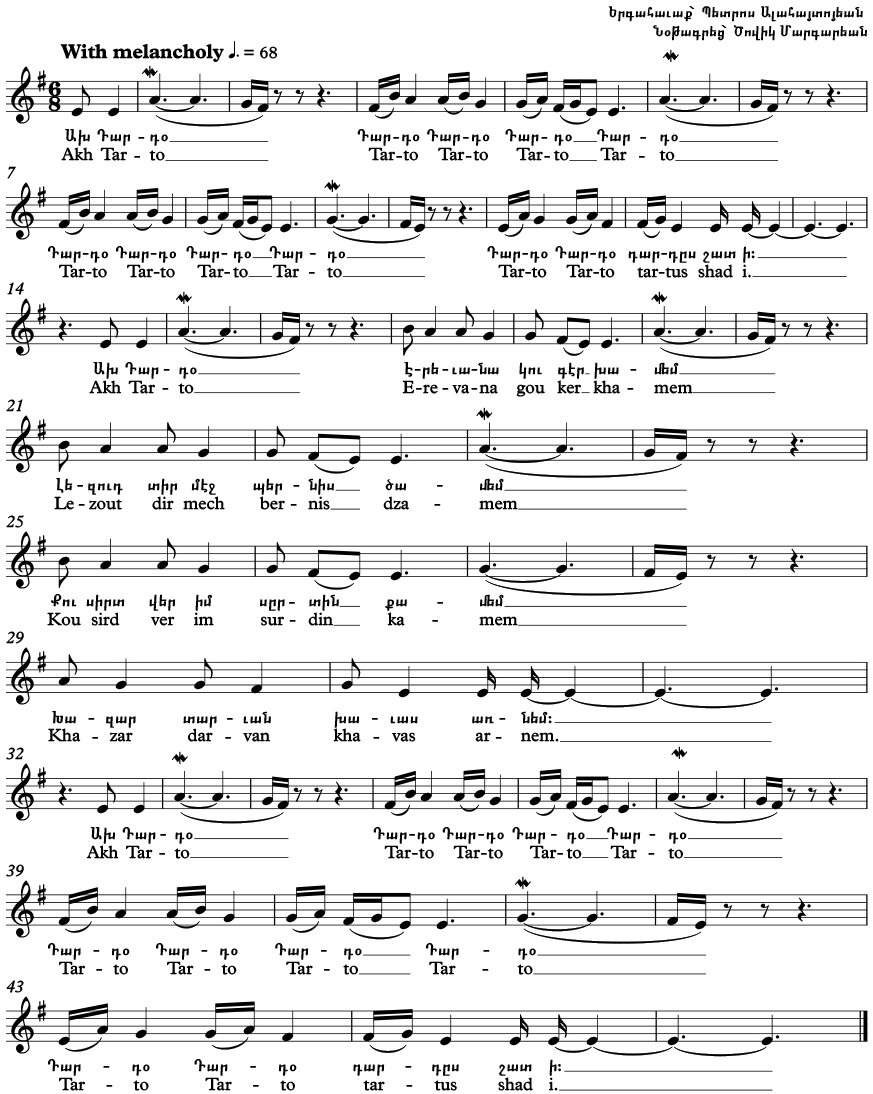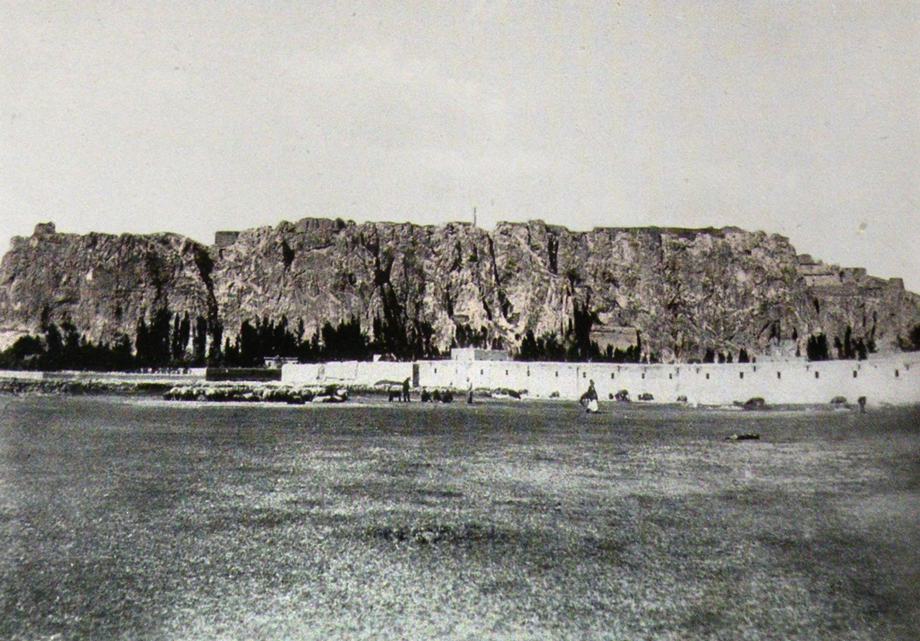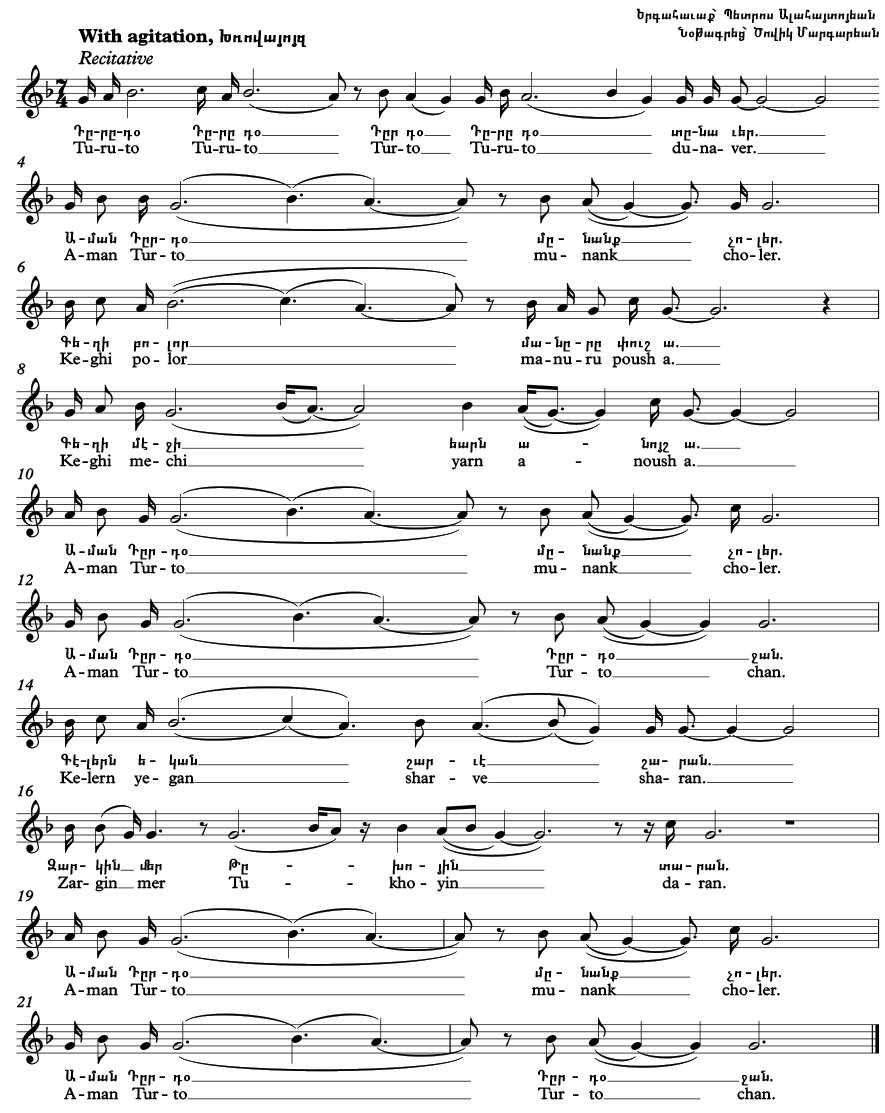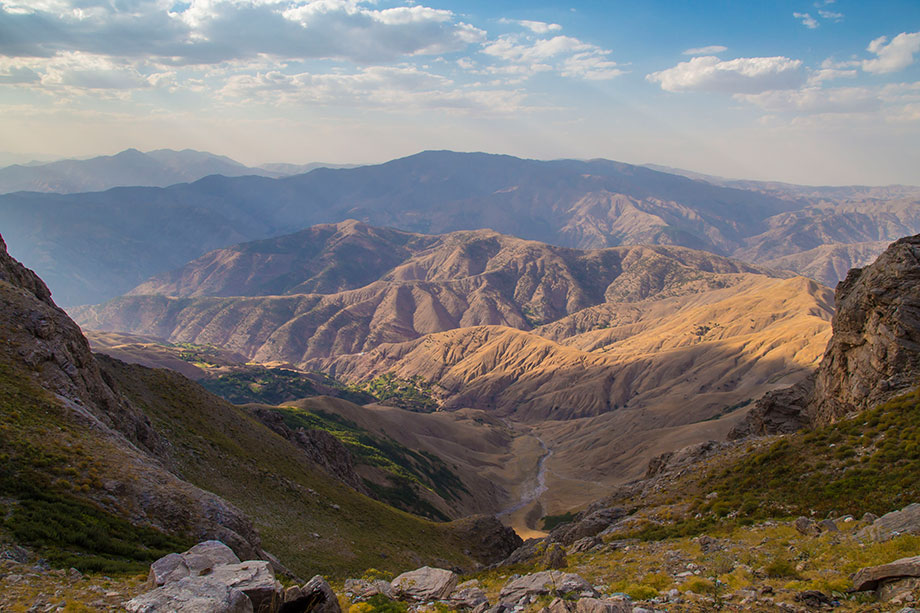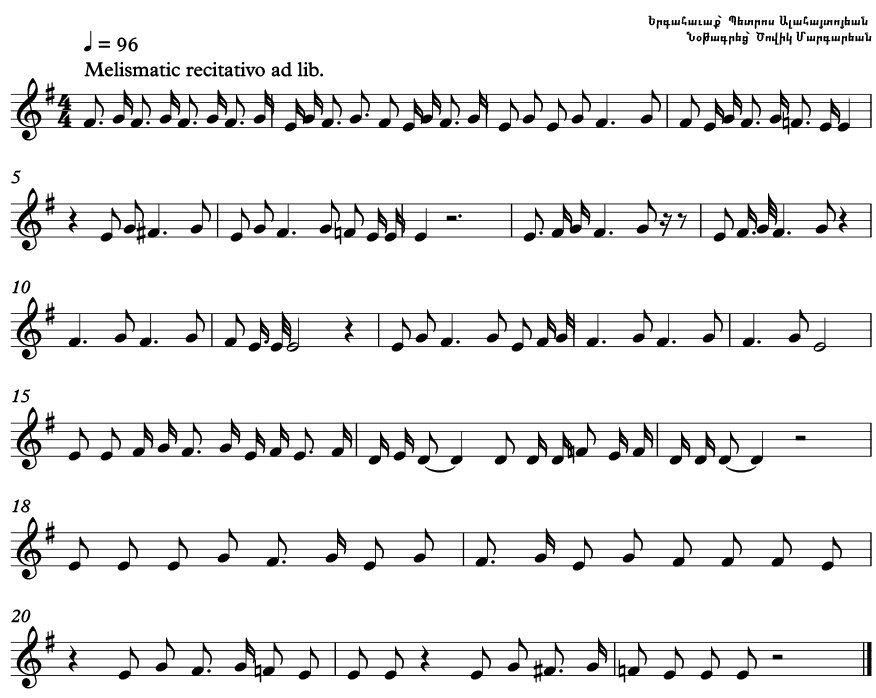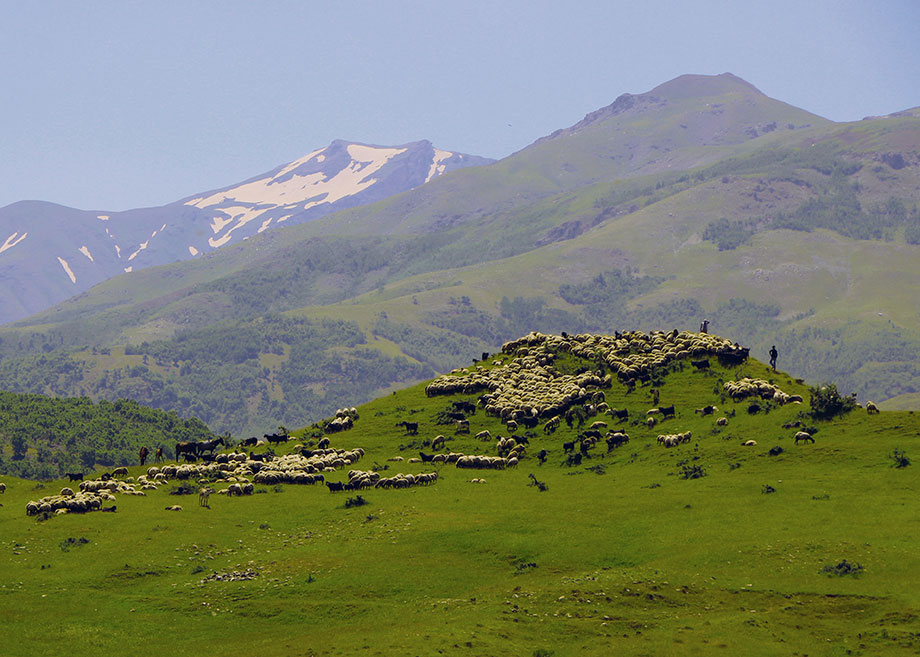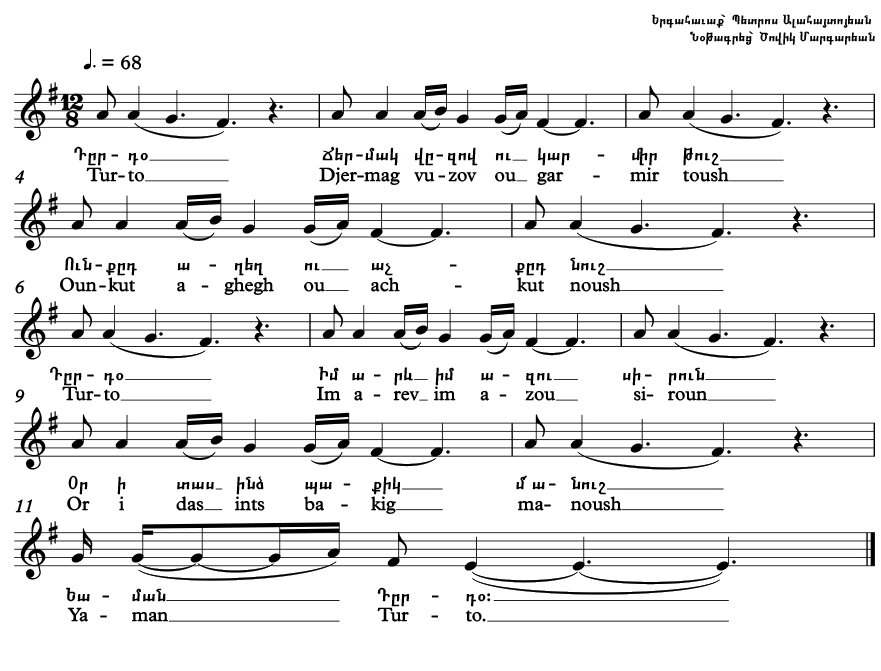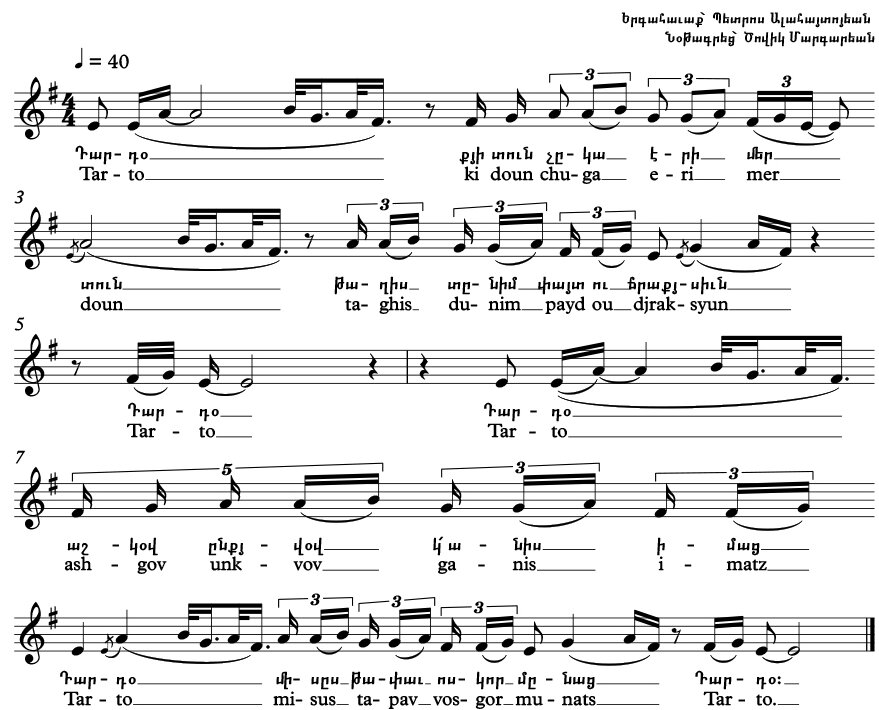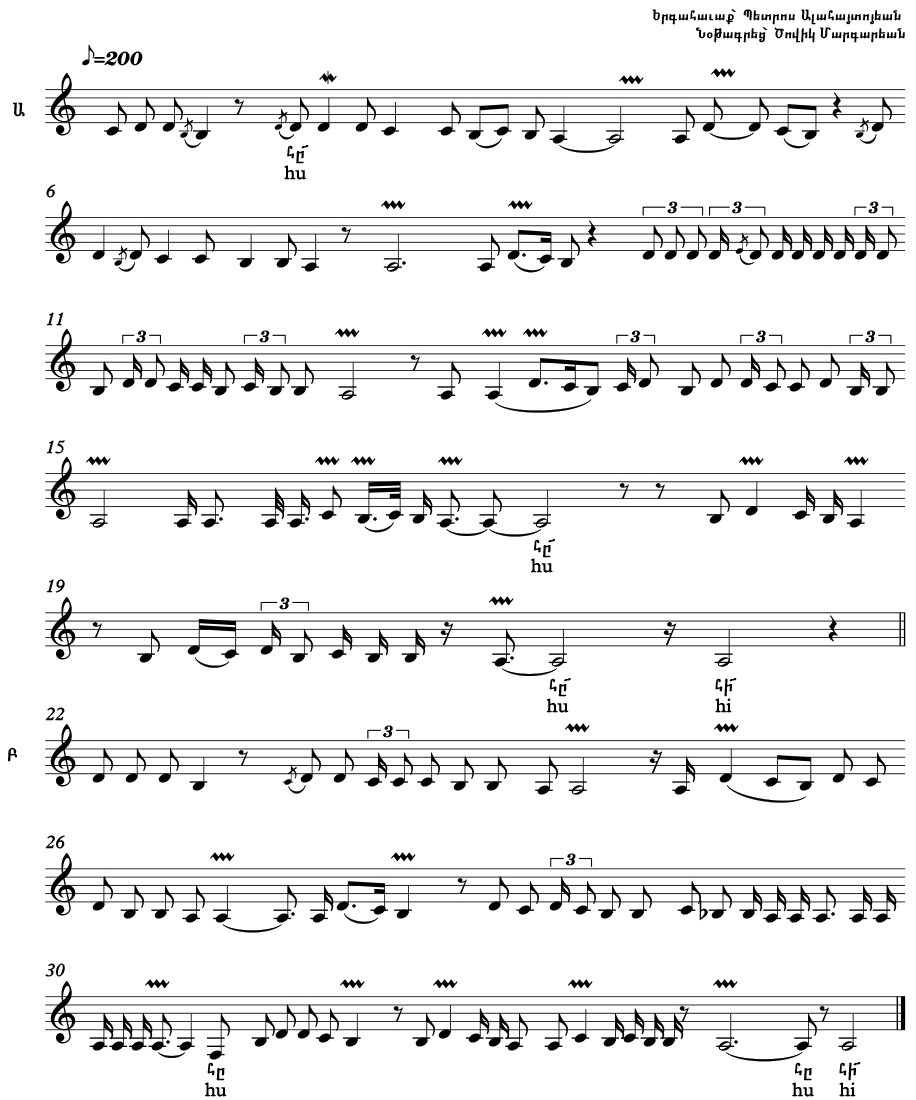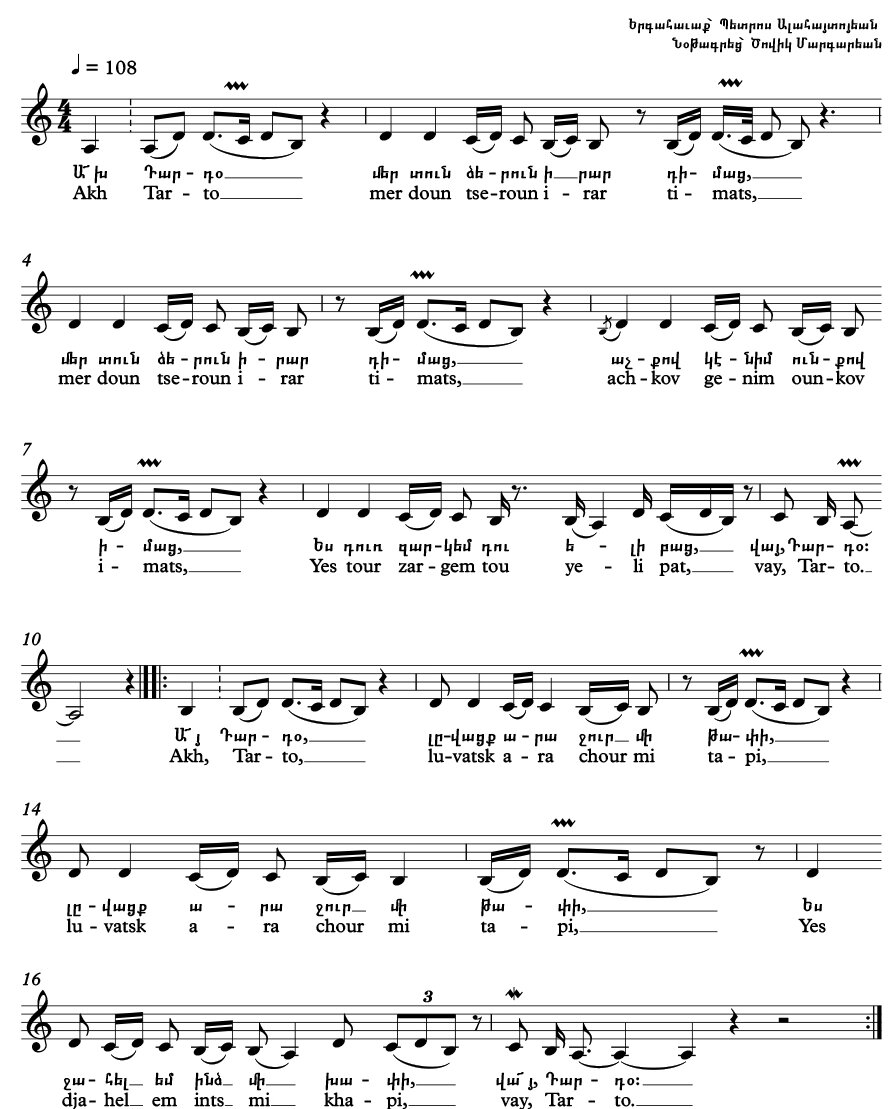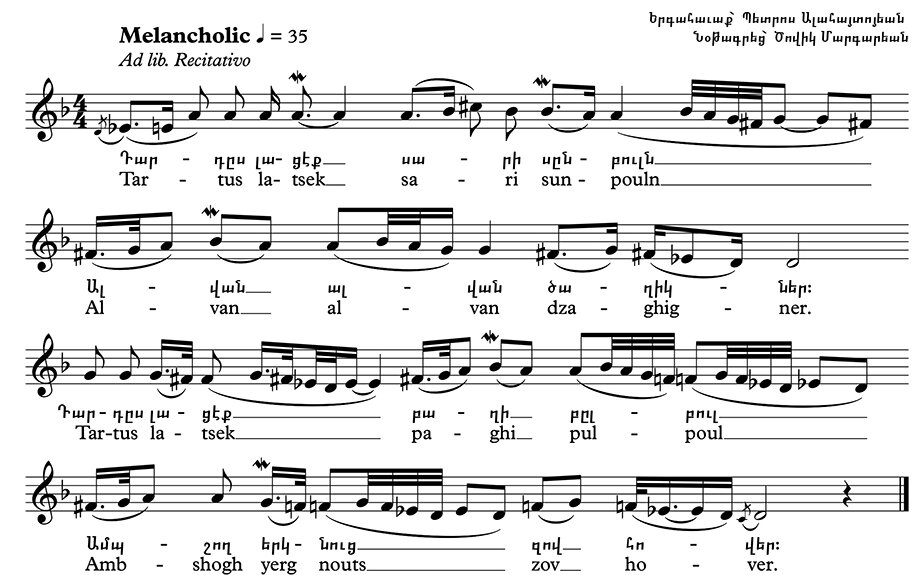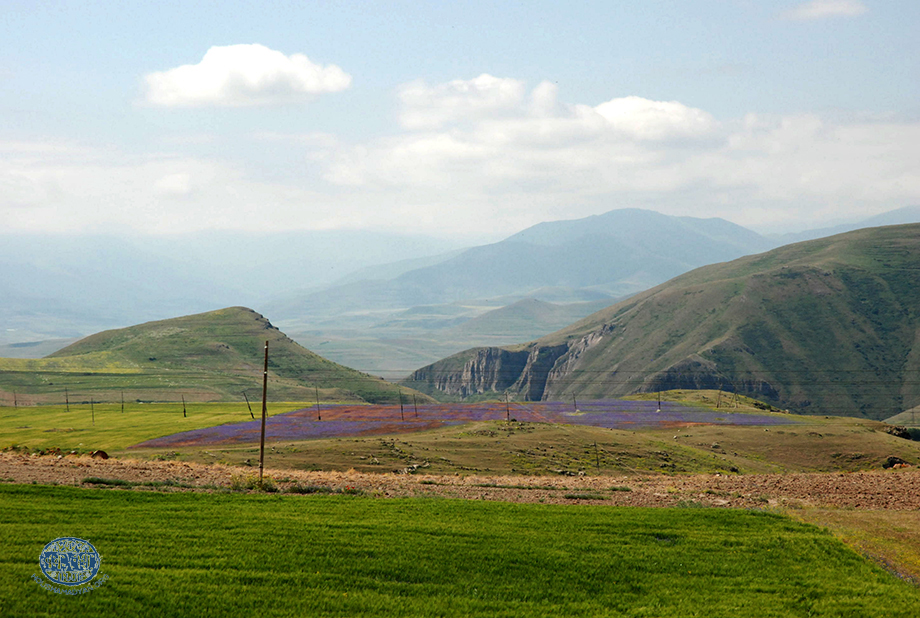Bedros Alahaidoyan Coll. 3 | Van
Dardos of Van and of Various other Areas
This page presents songs and dance music collected and recorded by musicologist Bedros Alahaidoyan. Beginning in the 1980s, Mr. Alahaidoyan traveled to cities and towns populated by Armenians throughout the Diaspora, in search for Genocide survivors from whom he collected rare songs and anecdotes of their native cities and villages.
Editing of this page, as well as music engraving and digitization, provided by Dzovig Markarian, DMA. Translation: Simon Beugekian.

Dardo – A dirge, a lament, or love song (also tarto, derdo, terto, tarten, or trto – spelled in various ways in Armenian).
The term dardo first entered our dialectical lexicon as a variation of the Turkish word dard, which means sorrow, mental/spiritual distress, or anxiety.
“The Armenian spirit is intimately acquainted with the sorrow that flows from it. By their nature, most dardos were expressions of romantic despair. But any painful event could be styled and weaved into a dardo,” writes Bedros Alahaidoyan [1]. The solo dardo, as a musical genre, probably originated in Van, and thereafter spread to other areas. The Van dardo has a very clear, characteristic construction, consisting of four consecutive sounds that drop via various undulations – all typical traits of a lament.
In accordance with the wishes of Bedros H. Alahaidoyan, while the songs presented in this article do not all have their origins in Van, they have all been posted on this page, which is devoted to geographic area of Van. The dardos crafted outside of Van were simply variations of the same genre, rather than a separate genre in and of themselves.
Aside from dardos that are pure laments, it is not always clear what the singer of each song is lamenting or mourning. Sometimes it isn’t even clear that the singers are lamenting, as opposed to simply praising the objects of their love. One thing is clear – these songs are often of a romantic nature, and the term dardo itself seems to have become personified. Singers often address dardo when mourning, or the objects of their love. In many cases, it is as if the term dardo is a proper noun, or that it is synonymous with the expression “my dear.” The only dardo provided here that has a clear object to whom it is dedicated is dardo number 4. According to Maro Nalbandian, this sorrowful love song commemorates the martyrdom of Fedayee Tkhgo, who was killed in a clash with Kurdish fighters.
Articles on dardos have appeared in two books on folk songs written by Bedros Alahaidodyan. The aim of this article is to bring together the information provided in those two articles, and also to provide additional information from additional sources, all from Alahaidoyan’s own archives.
Thus, dardos number 1 and number 2 appear in Bedros H. Alahaidoyan’s Van-Vasbouragani Azkakragan Pnorosh Yerkayin Nmoushner [Collection of Folk Songs Native to Van-Vasbouragan] (2015). Recordings of these songs appear on the second compact disc accompanying the volume, as songs number 14 and 15, respectively.
1) Bedros H. Alahaidoyan, Van-Vasbouragani Azkakragan Pnorosh Yerkayin Nmoushner [Collection of Folk Songs Native to Van-Vasbouragan], Chirak Printing-Publishing, Beirut, 2015, 192 pages.
2) Bedros H. Alahaidoyan, Paloui (yev Daradzashrchani) Yerajshdagan Azkakragan Havakadzo [Collection of Folk Music from Palou (and Environs)], Published by Trazarg, Glendale, California 2009, 448 pages.
However, dardo number 3, which is sung by Armen Sosigian, a relative of Nshan Sosigian’s, does not appear in the aforementioned volume. Although this is the same song as dardo number 2, there are unique differences between the two interpretations.
Dardos number 4 and 5 can be found in Alahaidoyan’s Paloui (yev Daradzashrchani) Yerajshdagan Azkakragan Havakadzo [Collection of Folk Music from Palou (and Environs)] (2009). The recordings of the songs appear on the first compact disc accompanying the book, as songs number 28 and 29, respectively.
Dardos number 6 and 7 are only mentioned in passing in the Palou volume, but recordings of these songs do not appear on the accompanying compact discs.
This collection also introduces dardos number 3, 6, 7, and 11, all from Alahaidoyan’s archives, alongside their recordings; as well as dardos number 8, 9, and 10, which appear as scores, but for which recordings are not available.
To conclude, this article is an attempt to collect and present in one location sounds, traditions, and history that have been scattered and have appeared in various sources. Dardos that are known to have originated in Van are presented alongside dardos from other regions. The similarities and differences between these compositions are a testament to how these songs were born out of the people’s innocent spirit; how the genre traveled from region to region and was passed down from one generation to the next; how it underwent countless changes over time; and how some of the songs had the fortune to have long lives, while others were abandoned and hopelessly faded away without a trace.
[1] Bedros H. Alahaidoyan, Van-Vasbouragani Azkakragan Pnorosh Yerkayin Nmoushner, Chirak Printing-Publishing, Beirut, 2015.
- 1- Dardo of Van – Yenovk Ghazarian, a native of Van
Bedros Alahaidoyan met Yenovk Ghazarian, a survivor of the Genocide and a native of Van, in 1987, at the Saint Sarkis nursing home in the city of Detroit. When Mr. Alahaidoyan informed Mr. Ghazarian that he was there collecting information and songs from survivors of the Genocide, Mr. Ghazarian reached into a drawer, pulled out a tape on which he had recorded all the songs he knew, and presented the tape to Mr. Alahaidoyan with the words “This is my life.” - 2- Dardo of Van – Nshan Sosigian, native of Van
- 3- Dardo of Van – Armen Sosigian, native of Van (Los Angeles, 1995)
- 4- Dardo of Sassoun – Maro Nalbandian, native of Palou (Aleppo, 1991-1996)
Maro Nalbandian was born in Aleppo, Syria, to a family that hailed from Palou. She probably learned the old songs from Palou that she sang from other members of her family, as well as other compatriots, particularly elderly compatriots. - 5- Dardo of Sassoun – Srpouhi Sarkisian (Kurdish)
- 6- From the area of the present-day Republic of Armenia(unknown singer; from the collection of folklorist Parig Nazarian, Los Angeles)
- 7- Dardo of Van – Hayrig Mouradian (native of Van)
No recording available, only the song’s score. - 8- Talin Rgion (1969) – (only a lament)
No recording available, only the song’s score. - 9- Talin Region (1969) – Dardo
No recording available, only the song’s score.
In 1969, the population of Talin consisted primarily of survivors of the Armenian Genocide who had immigrated from the cities of Sassoun and Moush in 1915. These two dardos appeared in a songbook of songs from Talin, published in Yerevan by the Soviet Writer publishing house in 1984. - 10- Dardo of Artsakh – Haroutyun Der Minasian (no additional information available on the singer)

1- Dardo of Van – Yenovk Ghazarian, a native of Van
Dardo-o-o, Dardo-o-o
Yes inch g’anem tser dan dvek
Yes inch g’anem tser dan dvek
Dardo-o-o, Dardo-o-o
G’ertam g’arnem khalghi geghev
Dardo

2- Dardo of Van – Nshan Sosigian, native of Van
Akh dardo, dardo, dardo, dardo
Dardo, dardo, dardo, dardo
Dardo, dardo, dards shad i
Akh dardo, Yerevena gou ker khamem
Lezout dir mech bernis dzamem
Kou sird ver im srdin kamem
Khazar darvan khavas khanem
Akh dardo, yes aghounig dou djri pat
Tou djrits elar ke talir hap
Mez zi mech ke dou ir pepakhd
Akh dardo, dardo, dards shad i
Akh dardo, yergou shamam mech kou dzotsin
Meg dou dnem ver im khotsin
Meg togh mna mech ko dzotsin
Akh dardo, dardo, dards shad i
Akh dardo, dardo, dardo, dardo
Dardo, dardo, dardo, dardo
Dardo, dardo, dards shad i

3- Dardo of Van – Armen Sosigian, native of Van (Los Angeles, 1995)
Akh dardo, dardo, dardo, dardo
Dardo, dardo, dardo, dardo
Dardo, dardo, dards shad i
Akh dardo, Yerevena gou ker khamem
Lezout dir mech bernis dzamem
Kou sird ver im srdin kamem
Khazar darvan khavas khanem
Akh dardo, yes agounig dou djri pat
Tou djrits elar ke talir hap
Mez zi mech ke dou ir pepakhd
Akh dardo, dardo, dards shad i
Akh dardo, yergou shamam mech kou dzotsin
Meg dou dnem ver im khotsin
Meg togh mna mech ko dzotsin
Akh dardo, dardo, dards shad i
Akh dardo, dardo, dardo, dardo
Dardo, dardo, dardo, dardo
Dardo, dardo, dards shad i

4- Dardo of Sassoun – Maro Nalbandian, native of Palou (Aleppo, 1991-1996)
Dardo, dardo, dardo, dardo, dnaver
Aman, dardo, mnank choler
Kezi polor maner poush a
Keghi michi yarn anoush a
Aman, dardo, mnank choler
Aman, dardo, dardo chan
Kelern egan sharve-sharan
Zargin mer Tekhoyin daran
Aman, dardo, mnank choler
Aman, dardo, dardo chan
Yeli yertank sarn in Sassoun
Yes eghnim toup, tou eghnis soun
Aman, dardo …

5- Dardo of Sassoun – Srpouhi Sarkisian (Kurdish)

6- From the area of the present-day Republic of Armenia (unknown singer; from the collection of folklorist Parig Nazarian, Los Angeles)
Derdo,
Djermag vzov ou garmir toush
Ounkt aghegh ou achkt noush
Dardo,
Im arev im (azou) siroun
Or i das ints bakig m’anoush
Yaman, dardo
Dardo,
Tser dan polor manr poush e
Keghi michi yarn anoush e
Dardo,
Arants kezi sirds dkhour
Ors mshoush ou khavar e
Yaman, dardo


7- Dardo of Van – Hayrig Mouradian (native of Van)
Dardo, kyi doun chga, ari mer doun
Taghis denim, pal dou djrakhsoun, dardo.
Dardo, ashgov enkhvov g’anis imats
Mises tapav, ousgor mnats, dardo

8- Talin Region (1969) – (only a lament)
He! Hi!

9- Talin Region (1969) – Dardo
Akh, dardo!
Mer doun tseroun irar timats
Mer doun tseroun irar timats
Achkov genim ounkov imats
Yes tour zargem tou eli pats
Vay, dardo!
Ay, dardo!
Lvatsk ara chour mi tapi
Yes chahel em ints mi khapi
Vay, dardo!
Ay! Le! Dardo!
Ay! Le! Dardo!
Keghi michi yarn anoush er
Et dnaver Pezon savtits dzour i….

10- Dardo of Artsakh – Haroutyun Der Minasian
Dards latsek sari snpoul
Alvan alvan dzaghigner
Dards latsek paghi plpoul
Ambshogh yergnouts zov hover
Yergink kedin klkhous mtnan
Andoun ander gou lam yes
Yergink kedin klkhous mtnan
Andoun ander gou lam yes
Yars daran chanes daran
Honkour honkour gou lam yes
Akh yars indzi hanets srden
Andjar toghets ou knats
Akh yars indzi hanets srden
Andjar toghets ou knats
Srdis sevdan khoronk yaran
Antegh toghets ou knats
Dards latsek sari snpoul
Alvan alvan dzaghigner
Dards latsek paghi pnpoul
Ambshogh yergnouts zov hover

